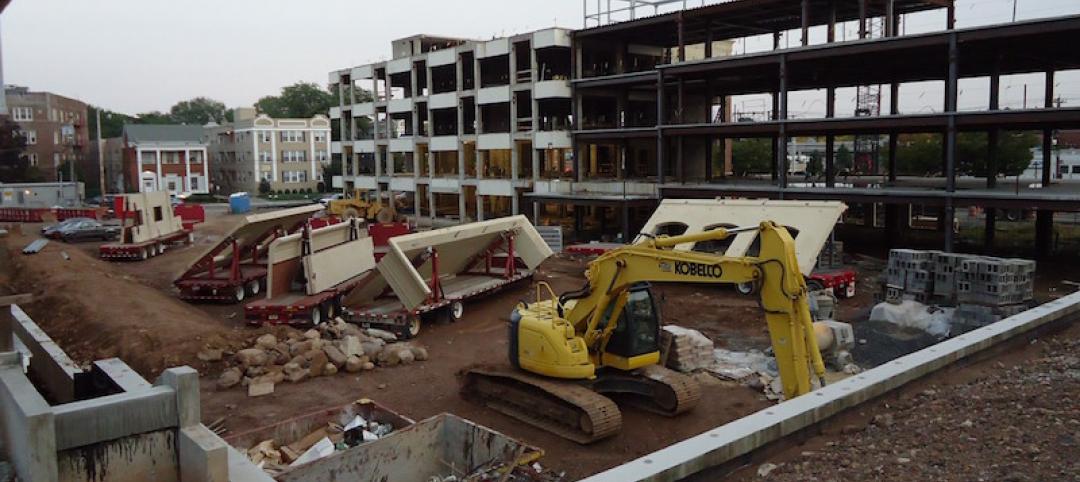The Department of Energy announced $39 million in awards for 18 projects that are developing technologies to transform buildings into net carbon storage structures.
Several of the awards are targeted for alternative concrete and cement materials as part of DOE’s drive to improve energy efficiency and reduce greenhouse gas emissions in the built environment. “There’s huge, untapped potential in reimagining building materials and construction techniques as carbon sinks,” Jennifer M. Granholm, DOE secretary, said in a press release.
Other projects funded by the DOE include:
- Development of “living” wood with the strength of steel, a self-healing capability, and combined carbon-sequestering benefits from wood and microbes by Purdue University.
- Development of a composite panel containing bio-derived natural fibers that exhibit excellent mechanical and functional properties while maintaining a carbon-negative footprint by SkyNano LLC.
- Design of a carbon-negative, medium-size building structure using a high-performance floor system with maximized surface area for carbon absorption that uses a novel carbon absorbing concrete mixture as a building material at the University of Pennsylvania.
The DOE awards are intended to help meet the goal of net zero emissions by 2050 outlined in an executive order signed by President Biden last year to make the federal government carbon neutral. The program aims for a 65% reduction in greenhouse gas emissions by 2030.
Related Stories
Contractors | Feb 13, 2015
Survey shows craft labor shortage may slow construction
32% of surveyed contract professionals said they will experience slow growth if their companies cannot reasonably meet the need for skilled labor and tradespeople.
Mixed-Use | Feb 13, 2015
First Look: Sacramento Planning Commission approves mixed-use tower by the new Kings arena
The project, named Downtown Plaza Tower, will have 16 stories and will include a public lobby, retail and office space, 250 hotel rooms, and residences at the top of the tower.
Architects | Feb 13, 2015
OMA commissioned to design newest New York High Line addition
Rem Koolhaas is the latest addition to the list of starchitects working on projects near the High Line elevated park.
Codes and Standards | Feb 12, 2015
ASHRAE, USGBC, IES consider biomass requirements in green building standard
The proposal would add biomass to approved renewables.
Codes and Standards | Feb 12, 2015
New Appraisal Institute form aids in analysis of green commercial building features
The Institute’s Commercial Green and Energy Efficient Addendum offers a communication tool that lenders can use as part of the scope of work.
Office Buildings | Feb 12, 2015
Is Houston headed for an office glut?
More than 13 million sf could be completed this year, adding to this metro’s double-digit vacancy woes.
Modular Building | Feb 12, 2015
New shipping container complex begins construction in Albuquerque
The Green Jeans Farmery already has a hydroponic farm component courtesy of owner and entrepreneur Roy Solomon.
Transit Facilities | Feb 12, 2015
Gensler proposes network of cycle highways in London’s unused underground
Unused tube lines would host pedestrian paths, cycle routes, cultural spaces, and retail outlets.
Healthcare Facilities | Feb 11, 2015
Primer: Using 'parallel estimating' to pinpoint costs on healthcare construction projects
As pressure increases to understand capital cost prior to the first spade touching dirt, more healthcare owners are turning to advanced estimating processes, like parallel estimating, to improve understanding of exposure, writes CBRE Healthcare's Andrew Sumner.
Transportation & Parking Facilities | Feb 11, 2015
11 of the nation’s best ‘Complete Streets’ policies of 2014
Austin, Texas, and Troy, N.Y., are among the cities with the strongest safe streets policies, according to a new report.
















